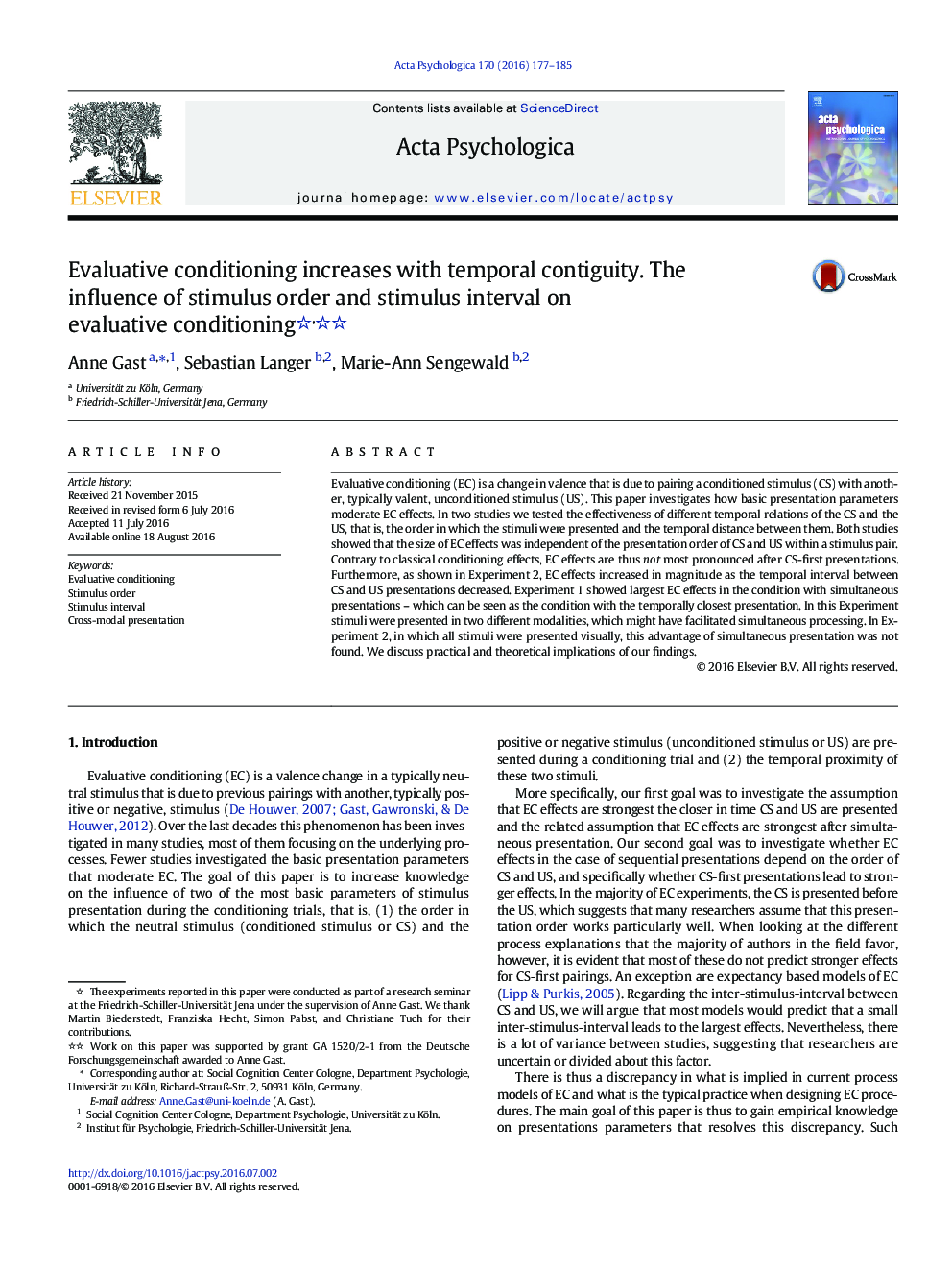| Article ID | Journal | Published Year | Pages | File Type |
|---|---|---|---|---|
| 7277004 | Acta Psychologica | 2016 | 9 Pages |
Abstract
Evaluative conditioning (EC) is a change in valence that is due to pairing a conditioned stimulus (CS) with another, typically valent, unconditioned stimulus (US). This paper investigates how basic presentation parameters moderate EC effects. In two studies we tested the effectiveness of different temporal relations of the CS and the US, that is, the order in which the stimuli were presented and the temporal distance between them. Both studies showed that the size of EC effects was independent of the presentation order of CS and US within a stimulus pair. Contrary to classical conditioning effects, EC effects are thus not most pronounced after CS-first presentations. Furthermore, as shown in Experiment 2, EC effects increased in magnitude as the temporal interval between CS and US presentations decreased. Experiment 1 showed largest EC effects in the condition with simultaneous presentations - which can be seen as the condition with the temporally closest presentation. In this Experiment stimuli were presented in two different modalities, which might have facilitated simultaneous processing. In Experiment 2, in which all stimuli were presented visually, this advantage of simultaneous presentation was not found. We discuss practical and theoretical implications of our findings.
Related Topics
Life Sciences
Neuroscience
Cognitive Neuroscience
Authors
Anne Gast, Sebastian Langer, Marie-Ann Sengewald,
